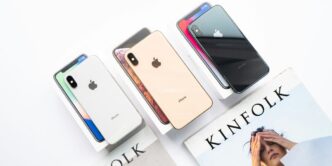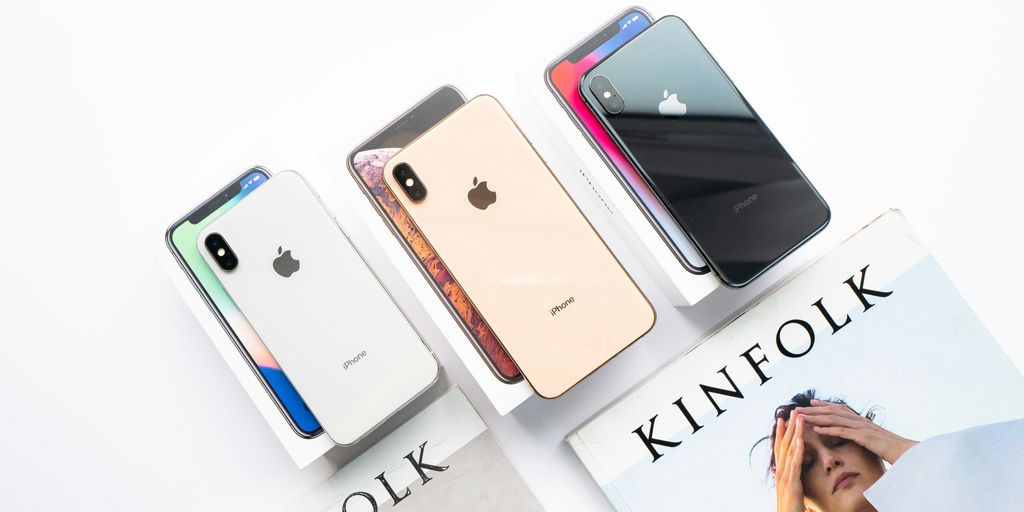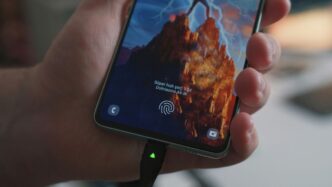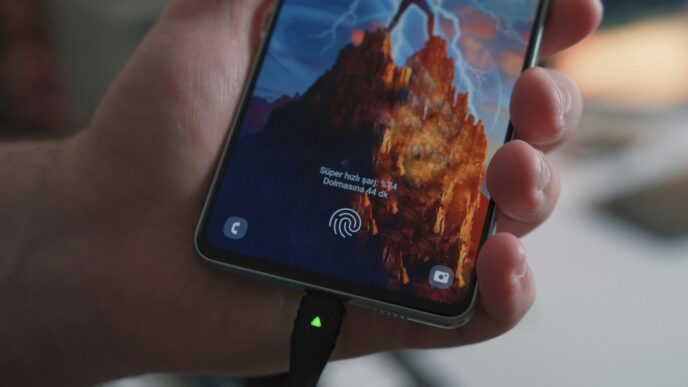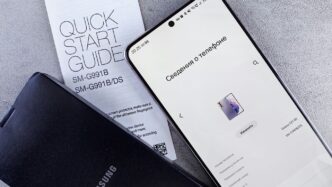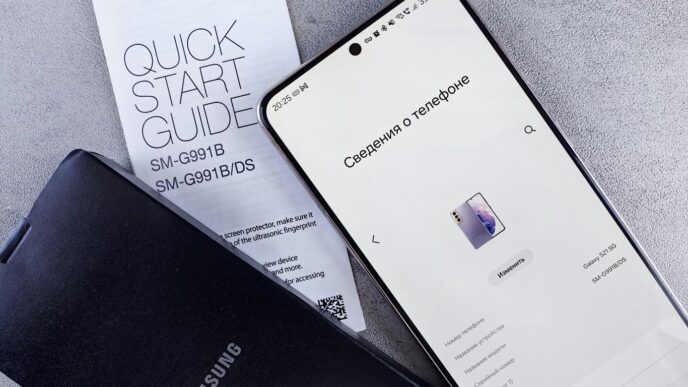The world of cell phone brands is pretty wild these days, right? It feels like every week there’s a new phone or a new feature being pushed. We use these things for everything, from talking to friends to managing our lives. So, it’s kinda important to know what’s out there and what makes different brands tick. This guide is just a look at some of the big players and what they’re up to, trying to make sense of all the options.
Key Takeaways
- The global cell phone market is huge, with billions in sales and steady growth, largely driven by 5G adoption and new tech like AI.
- Major cell phone brands like Samsung and Apple lead with innovation and strong user experiences, but others like Xiaomi offer great value.
- Brands such as Vivo, OPPO, and Motorola are making their mark with specific strengths like camera tech, design, or foldable innovation.
- Niche brands like OnePlus and Realme are grabbing attention by focusing on performance and specific user groups, like gamers or younger buyers.
- Consumer preferences vary a lot, with the UK often prioritizing sustainability and premium features, while other markets focus more on affordability and core performance.
The Global Smartphone Market Landscape

The global smartphone market is a massive thing, seriously. We’re talking about a business that’s projected to be worth around £412 billion, or $520 billion, by the end of 2024. It’s not just about phones anymore; it’s how we all connect, work, and basically live our digital lives. Shipments are up a bit too, with about 295.2 million handsets sent out in the second quarter of 2025, which is a small jump from the year before. They expect to hit about 1.18 billion units shipped for the whole year. It’s pretty wild to think about how many phones that is.
Market Size and Growth Projections
So, the market is huge and it’s still growing. By 2027, it’s predicted to reach about £450 billion. Right now, there are over 250 brands trying to get a piece of this pie. It’s a really competitive space, and companies are always trying to come up with the next big thing to get people to upgrade.
Regional Shipment Dominance
When you look at where most of these phones are going, Asia-Pacific is the biggest player, taking up almost half of all global shipments. Europe comes in second with about 18%, and North America is right behind that at 14%. The UK is a pretty important part of the European market, and people here seem to really like the fancier, more expensive phones. Other parts of the world, like Africa, are also showing good growth, which is great for the overall market.
Key Market Drivers: 5G and AI
What’s really pushing things forward these days? Well, 5G is a big one. About half of all phones shipped now have 5G. Plus, artificial intelligence, or AI, is starting to show up in phones in new ways, making things easier and more interesting for users. These two things, 5G and AI, are really what a lot of brands are focusing on to make their phones stand out and appeal to customers.
Leading Cell Phone Brands and Their Strategies
Samsung: Innovation and Ecosystem Leadership
Samsung really holds its own in the smartphone world. They’ve got a huge range of phones, from the super high-end Galaxy S series to their more budget-friendly A series. What’s really cool is how they push new tech, like those foldable phones, and make sure everything works together. Think about it: your Samsung phone, watch, and earbuds all connecting up. It’s a whole system. They’re also big on making sure their phones have great cameras and displays, which, let’s be honest, is what most people care about day-to-day. They shipped a massive 58 million units in Q2 2025, showing just how popular they are globally.
Apple: Privacy and User Experience
Apple does things a bit differently. They focus a lot on making their phones easy to use and keeping your information private. It’s not just about the hardware; it’s the whole package with their software, iOS. People seem to really like that simplicity and the feeling of security. While they don’t have as many models as some other brands, the ones they do have are usually top-notch. They’ve built a really strong brand loyalty, and many users stick with Apple for years. It’s that consistent experience that keeps people coming back.
Xiaomi: Value and Performance
Xiaomi is a brand that’s really good at giving you a lot for your money. You get solid performance and features that you might expect on more expensive phones, but at a much lower price point. They’ve been growing fast, too. In Q3 2023, they were the only big brand to actually ship more phones than the year before, moving 41.5 million units. That tells you something, right? They seem to hit that sweet spot for a lot of people who want a good phone without breaking the bank. They’re definitely a brand to watch, especially if you’re looking for bang for your buck.
Emerging and Established Cell Phone Brands

When we talk about the phone market, it’s not just the big names like Samsung and Apple that matter. There are some really interesting brands out there that are either making a big splash for the first time or have been around for a while, quietly doing their thing. These companies are often pushing boundaries in specific areas, like camera tech or how fast their phones charge, and they’re definitely worth a look if you’re not just following the crowd.
Vivo: Camera Technology and Affordability
Vivo has really made a name for itself by focusing on camera systems. They often pack some pretty advanced camera hardware into their phones, which is great if you’re someone who likes taking photos or videos with their phone. Beyond the cameras, they also manage to keep their prices quite reasonable, making them a solid choice for people who want good features without spending a fortune. It’s a smart move, really, because a lot of people are looking for that balance.
OPPO: Design and Fast Charging
OPPO is another brand that’s been doing some cool stuff, especially when it comes to how their phones look and how quickly they can charge up. They put a lot of effort into making their devices look sleek and modern, and their fast-charging technology is seriously impressive. You can get a significant amount of battery life back in just a few minutes, which is a lifesaver when you’re in a hurry. They’ve really nailed that combination of style and practicality.
Motorola: Foldable Innovation and Clean Software
Motorola is making some interesting moves, particularly with their foldable phones. They’ve been experimenting with different designs, and their latest models have some pretty neat features, like larger outer screens. What’s also a big plus for many people is their software. Motorola tends to stick pretty close to the standard Android experience, meaning it’s clean, easy to use, and doesn’t have a ton of extra apps you don’t need. It’s a refreshing approach in a market that can sometimes feel cluttered.
Niche and Growing Cell Phone Brands
Beyond the giants like Samsung and Apple, there’s a whole other world of phone brands making waves, often by focusing on specific features or price points. These companies might not have the same massive market share, but they’re definitely worth a look if you’re after something a bit different or just want more bang for your buck.
OnePlus: Performance at Competitive Prices
OnePlus has carved out a solid niche by offering devices that pack a serious punch in terms of performance, often rivaling flagship phones, but at a more accessible price. They really focus on giving users a smooth, fast experience, which is why their phones are popular with tech enthusiasts who appreciate speed and a clean software interface. Think of them as the brand that brings high-end specs down to earth, making powerful tech available to more people.
- Key Innovations:
- Hasselblad camera collaborations for better photography.
- Fluid AMOLED displays with high refresh rates for smooth visuals.
- OxygenOS, known for its clean and fast Android experience.
Realme: Gaming Focus and Youth Appeal
Realme is a brand that really seems to understand what younger consumers are looking for. They’ve built a reputation for offering phones with trendy designs and features that are great for gaming, like fast displays and powerful processors. Plus, they manage to keep prices down, which is a big win for anyone on a budget who still wants a phone that can keep up with their entertainment needs.
- Why Consumers Prefer Realme:
- Affordable pricing.
- Devices optimized for gaming performance.
- Vibrant and youthful design aesthetics.
Honor: Premium Features and Value
Honor is another brand that’s been busy making a name for itself by offering phones that feel more premium than their price tags suggest. They often include high-end features, like advanced camera systems and good build quality, making them a strong contender for people who want a lot of phone without paying top dollar. It’s a smart strategy that appeals to a wide range of users looking for quality and value.
- Market Position:
- Focus on premium features at competitive price points.
- Growing presence in European and Asian markets.
- Appeals to users seeking high-end specs without the flagship cost.
Consumer Preferences Across Markets
It’s pretty interesting how what people want in a phone can change depending on where they live. You can’t just assume everyone wants the same thing, you know? Like, in the UK, there’s a growing interest in phones that are made more sustainably. People are thinking more about the environmental impact of their gadgets, which is a good thing. Plus, with 5G becoming more common, folks are looking for phones that can really take advantage of that faster speed.
UK Market Priorities: Sustainability and 5G
So, what’s driving this in the UK? Well, a few things. For sustainability, it’s about brands being more upfront about their materials, repairability, and even how they handle old devices. Think less plastic, more recycled components, and easier ways to fix things when they break. And for 5G, it’s not just about having the network; it’s about phones that offer a smooth, reliable experience on it, whether that’s for streaming, gaming, or just faster downloads. It seems like a lot of UK buyers are looking for that balance of eco-consciousness and future-proofing.
Global Consumer Needs: Affordability and Performance
Now, if you zoom out and look globally, especially in markets where budgets are tighter, affordability really takes center stage. People need a phone that works well for everyday tasks without costing an arm and a leg. This means good battery life, a decent camera for everyday shots, and enough processing power to run popular apps smoothly. It’s less about having the absolute latest tech and more about getting solid, reliable performance for the money. Brands that can hit that sweet spot often do really well.
Appeals to Younger Demographics
Younger folks, on the other hand, often have different priorities. Gaming is a big one. They want phones with fast refresh rate displays and powerful processors that can handle demanding games without lagging. Fast charging is also a huge plus because who wants to be tethered to a wall for hours? And let’s be honest, design and how the phone looks can matter a lot too. Brands that offer cool, trendy designs and features that are popular on social media tend to grab the attention of this group. It’s a mix of performance for entertainment and a bit of style.
Technological Advancements Shaping Cell Phone Brands
It feels like every few months, there’s some new tech that phone companies are pushing. It’s not just about making phones faster anymore, though that’s still a thing. We’re seeing some pretty big shifts in what phones can actually do and how we use them. These changes are really making brands rethink their whole approach.
The Rise of Foldable Devices
Remember when foldable phones seemed like a futuristic gimmick? Well, they’re here, and they’re getting better. Companies are putting out more models, and they’re not just for early adopters anymore. Think about being able to have a regular-sized phone that then opens up into a small tablet – great for multitasking or watching videos.
- Improved Durability: The hinge mechanisms are getting stronger, and the screens are more resistant to scratches and creases.
- More Form Factors: We’re seeing different types of foldables, from the book-style fold to the flip-style that fits in your pocket.
- Software Optimization: Apps are starting to work better on these larger, flexible screens, making them genuinely useful.
It’s still a bit of a premium market, but the tech is definitely moving forward. Brands like Samsung are really pushing this category, and others are starting to catch up. It’s interesting to see how this will change how we carry and use our phones day-to-day.
AI Integration in User Experience
Artificial intelligence is no longer just a buzzword; it’s actively being built into the phones we use. This isn’t just about voice assistants anymore. AI is starting to make our phones smarter in ways that actually help.
- Smarter Photography: AI can help adjust settings automatically for better photos, even in tricky lighting. It can also help with things like object removal or enhancing details.
- Personalized Performance: Phones can learn your usage patterns to manage battery life and app performance more efficiently.
- Real-time Translation: Imagine having a conversation with someone who speaks a different language, and your phone translates it instantly. This is becoming a reality, making communication much easier across borders. This kind of tech is a big deal for global connectivity mobile technology trends.
This AI integration is making phones more intuitive and helpful, almost like they can anticipate what you need. It’s a big shift from just having a device to having a personal assistant in your pocket.
Camera Systems and Charging Technology
Two areas where brands are constantly competing are the cameras and how fast we can charge our phones. It’s pretty wild how far these have come.
- Camera Megapixels and Sensors: We’re seeing phones with incredibly high megapixel counts, but it’s also about the size of the sensors and the lenses used. This means better low-light performance and more detail in photos.
- Optical Zoom: Instead of just digital zoom, which can make pictures look grainy, optical zoom uses actual lenses to get closer to your subject without losing quality. Some phones now offer multiple zoom lenses for different ranges.
- Ultra-Fast Charging: Battery anxiety is real, but brands are tackling it with super-fast charging. We’re talking about getting a significant charge in just a few minutes, which is a game-changer when you’re in a hurry.
These advancements mean that phones are becoming more capable tools for capturing memories and staying powered up throughout the day. It’s all about making the user experience smoother and more powerful.
Wrapping Up Our Phone Journey
So, we’ve looked at a bunch of phone brands, from the big players like Samsung and Apple to others making waves like Xiaomi and Vivo. It’s clear that no matter what you’re looking for – whether it’s the latest camera tech, a phone that folds, or just something that won’t break the bank – there’s a brand out there for you. The phone world keeps changing fast, with new features like AI and faster internet popping up all the time. What’s popular in the UK might be different from what people want in other parts of the world, but one thing’s for sure: phones are a huge part of our lives, and these companies are working hard to keep us connected and entertained.
Frequently Asked Questions
How big is the worldwide phone market?
The phone market is huge, worth about 412 billion pounds! In 2025, companies are expected to send out about 1.18 billion phones worldwide. This is a big deal because phones help us connect, work, and enjoy digital stuff.
Which parts of the world buy the most phones?
Asia-Pacific is the biggest area for phone sales, getting almost half of all the phones shipped. Europe is next, followed by North America. The UK really likes fancy phones and cares a lot about 5G and being eco-friendly.
What new technologies are making phones better?
Many phone companies are making their phones better by adding faster 5G internet and smart AI features that can do things like translate languages instantly. Foldable phones are also becoming more popular, with companies making cool new designs.
What do people in the UK look for in phones compared to other places?
People in the UK often look for phones that are made with the planet in mind and have long-term software support. Globally, though, many people are more focused on getting a good phone for a lower price and making sure it runs smoothly.
Which phone brands are the most popular and why?
Brands like Samsung and Apple are popular because they offer great quality and cool features, like Samsung’s foldable phones and Apple’s focus on privacy. Xiaomi, Vivo, and OPPO are also doing well by offering good features for less money.
What do younger people look for when buying a phone?
Younger people often like brands like Realme and OnePlus because they offer phones that are good for playing games and have stylish designs, all at prices that are easier to afford.

